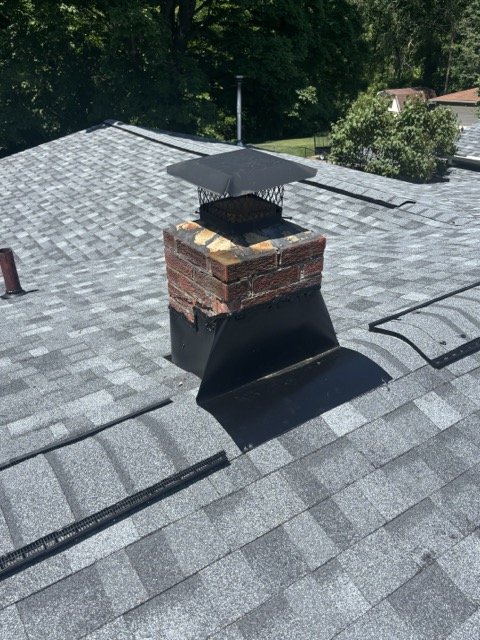- By Phoenix Roofing
- ParmaRoofingCompany
- 0 Comment
The Chimney Cricket: The Not-So-Silent Guardian
When homeowners think about their roof, aesthetics usually come to mind. However, beneath the shingles lies a crucial but often overlooked element: the chimney cricket. This triangular structure, made from wood, plays a vital role in protecting your home from water damage. Beyond its basic function, the chimney cricket has an interesting history and technical details worth exploring.
A History of Protection
The term “chimney cricket” has a somewhat mysterious origin. Some believe it comes from the Dutch word “kriek,” meaning “corner” or “wedge,” which refers to its shape. Others think it may be a playful adaptation of the insect’s name, comparing the sound of water flowing over the structure to a cricket’s chirp.
Looking for expert roofers in Parma Heights?
Phoenix Roofing & Solar is your #1 Parma roofer.
Make an appointment now!
Regardless of its name, the concept has been around for centuries. Early European architecture used similar methods to divert water around chimneys and other roof penetrations. The term “chimney cricket” likely became common in the 19th century as building practices became more standardized in North America.
The Science Behind the Chimney Cricket
The chimney cricket is more than just a historical element. It’s a simple yet effective design that serves an essential purpose. Here are its key components:
•The Wedge: The core of the cricket is a triangular wedge made from treated lumber. The angles of this wedge are critical, as they must match the roof pitch to ensure proper water flow.
•Flashing Integration: Flashing seals the junction between the roof and chimney. The cricket integrates with the flashing system to create a continuous watertight barrier, preventing water from getting under the shingles and into the structure.
•Shingle or Metal Covering: Once the wooden structure and flashing are in place, the cricket is covered with materials that match the roof. This can be shingles, metal roofing, or another suitable option, depending on your roof’s design.
The cricket diverts water around the chimney and toward the gutters, preventing water pooling and damage.
Benefits Beyond Water Diversion
While the main job is to divert water, it offers additional advantages:
•Ice Dam Prevention: In colder climates, ice dams can form where the roof meets the chimney. A well-designed cricket promotes water flow and melting, reducing ice buildup.
•Reduced Maintenance: By preventing water from pooling around the chimney, the cricket helps protect mortar joints from deterioration and leaks. This leads to fewer repairs over time.
•Enhanced Aesthetics: Though not its primary function, a well-built chimney cricket can improve the look of your roof by giving the area around the chimney a clean, finished appearance.
Chimney Cricket Installation: A Team Effort
Installing a chimney cricket is a job for a professional roofer. The process typically includes:
1.Assessment and Design: The roofer assesses the roof pitch, chimney size, and flashing system. They then design a custom cricket to integrate with your roof seamlessly.
2.Woodwork and Construction: Using treated lumber, the roofer constructs the cricket wedge based on the precise measurements and angles.
3.Flashing Integration: The roofer integrates the cricket with the flashing system to ensure a watertight seal and proper water flow.
4.Finishing Touches: The cricket is then covered with shingles or metal roofing material to match the rest of the roof, creating a cohesive look.
Investing in Peace of Mind
Although installing a cricket might seem like an extra cost, it’s a long-term investment in your roof’s health. A well-constructed cricket can prevent expensive repairs by protecting your chimney and surrounding roof structure from water damage.
Next time you look at your roof, remember the unsung hero working beneath the shingles. The cricket, with its simple yet effective design, plays a crucial role in keeping your home safe and dry.

